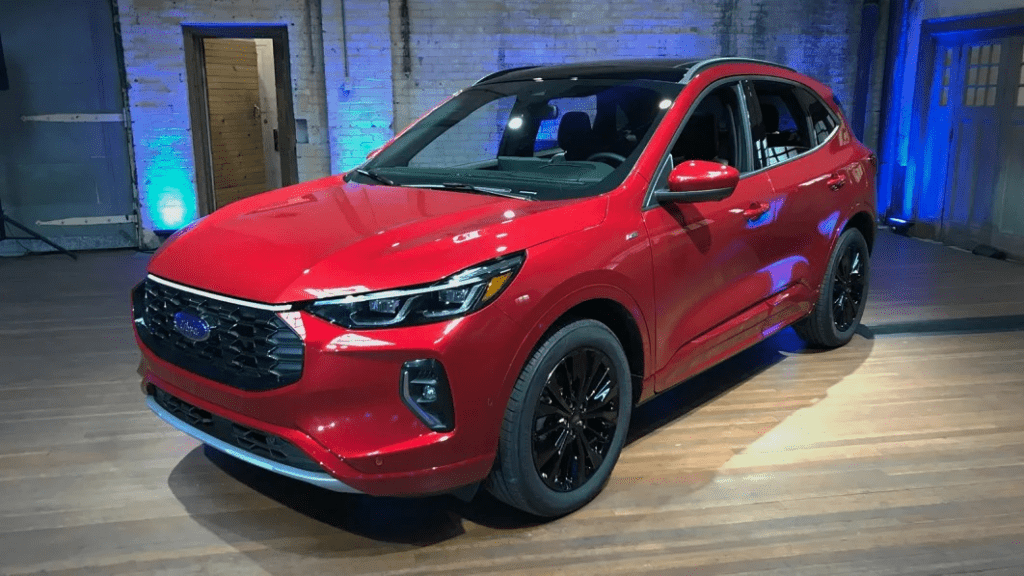IIHS updates overlap test: 2 SUVs get good marks, 9 fare poorly

Vehicles in crashes keep occupants safe by deforming around the cabin in a way that maintains cabin integrity. The Insurance Institute for Highway Safety’s moderate overlap test, introduced in 1995, has been a huge contributor to improved safety for front-row passengers in a crash. IIHS President David Harkey said, “Thanks to automakers’ improvements, drivers in most vehicles are nearly 50% less likely to be killed in a frontal crash today than they were 25 years ago.” In the ‘unintentional side effects’ column, crash safety has gotten worse for passengers in the back seats. When carmakers reengineered the front crash structure to protect the driver, more crash forces got distributed throughout the rear. IIHS research claims rear passengers have a 46% greater risk of fatal injury than front-row passengers, but back-seaters haven’t benefited from the same upgrades in safety as the front row. The IIHS updated its moderate overlap test to address the issue, putting 15 vehicles through the new regime. Two earned good ratings — the 2023 Ford Escape and the 2021-2023 Volvo XC40 — one was acceptable, three were marginal and nine were rated poor.
Every one of the crossovers sampled got good marks for all passengers in the original test. That test sees 40% of vehicle’s width on the driver’s side impacting an aluminum honeycomb barrier at 40 miles per hour. The updated test puts a crash dummy representing small woman or 12-year-old child in the seat behind the driver, the dummy’s sensors and grease paint measuring the effectiveness of the restraints and the forces a human body would need to endure. To achieve a good rating, the “measurements must not exceed limits indicating excessive risk of injury to the head, neck, chest, abdomen or thigh.” An institute engineer said, “In real-world crashes, chest injuries are the most common serious rear-seat injuries for adults.”
The sensors and video evidence showed back seat dummies in the Escape and XC40 endured minimal risk of injuries from excessive crash forces, from submarining under the seat belt, or from unwanted interaction with the side curtain airbag.
The Toyota RAV4 scored acceptable. The second-row dummy also endured minimal risk of injury to the chest and lower extremities. However, the lap belt slipped upward in a way that could increase abdominal injuries, and after the dummy’s head dipped during crash impact, the head came back up between the rear curtain airbag and rear window.
The Audi Q3, Nissan Rogue and Subaru Forester were rated marginal. The rear dummies in the Q3 and Rogue displayed elevated risks for head and neck injuries as well as a lap belt rising to the abdomen, the Forester crash test dummy showed an elevated risk of chest injury.
The Buick Encore, Chevrolet Equinox, Honda CR-V and HR-V, Hyundai Tucson, Jeep Compass and Renegade, Mazda CX-5 and Mitsubishi Eclipse Cross got the worst mark of poor. Overall, the new test showed their rear passengers at high risk of head, neck, chest and abdominal injuries due to excessive seat belt forces, heads impacting either the front seatback or C-pillar, heads slipping between the rear curtain airbag and window, and lap belt slippage.
We imagine that as more vehicles get tested, we’ll see a similar ratings distribution. The IIHS didn’t mention anything about making the new ratings a qualification for Top Safety Pick+ status, but it’s always possible. Harkey said, “The industry has always been good about responding to tests that we have introduced. We expect they will do so in this case, and we expect they will be able to do so quickly.” Head to the IIHS site for more details and findings.
Related video:







